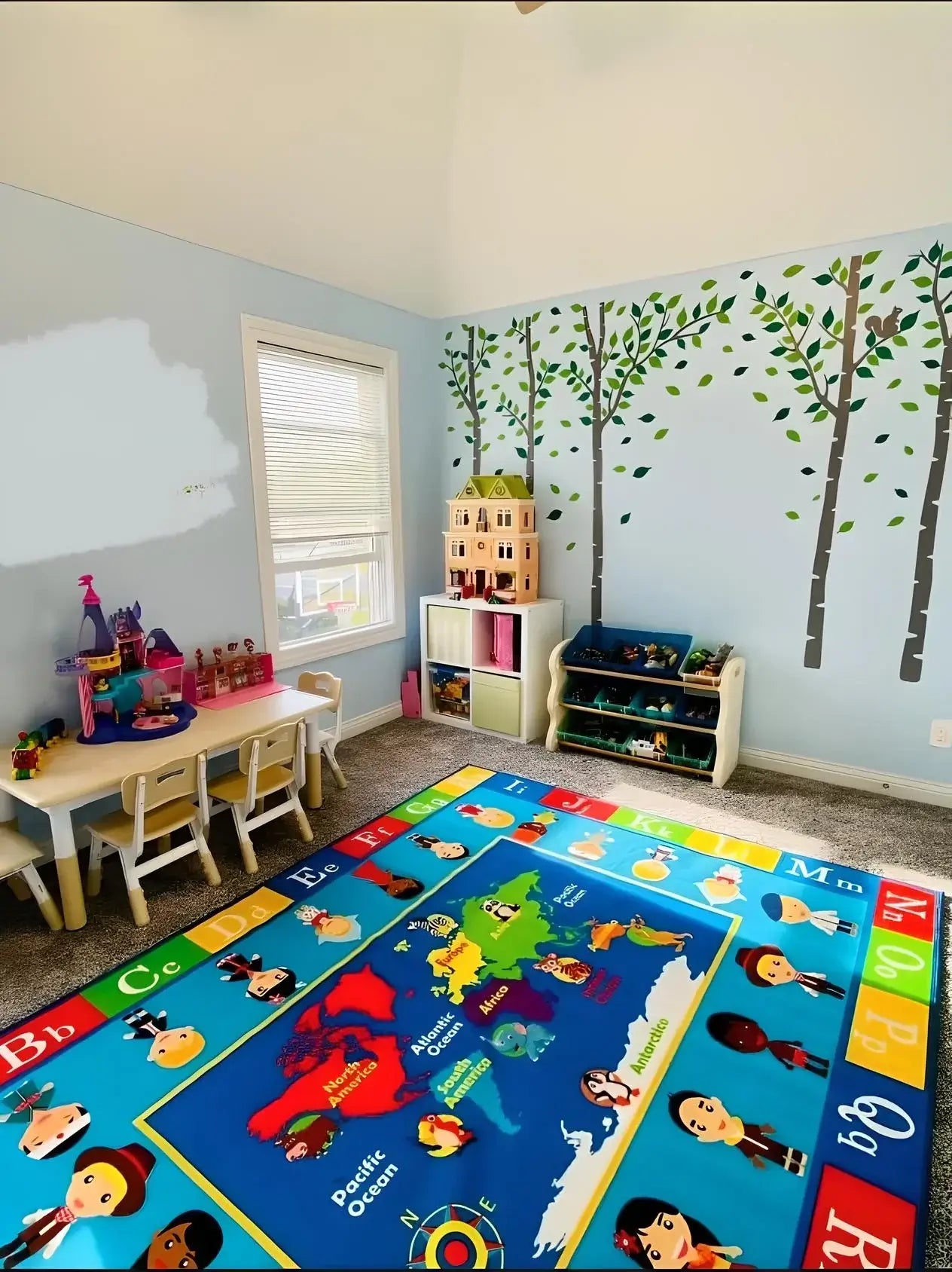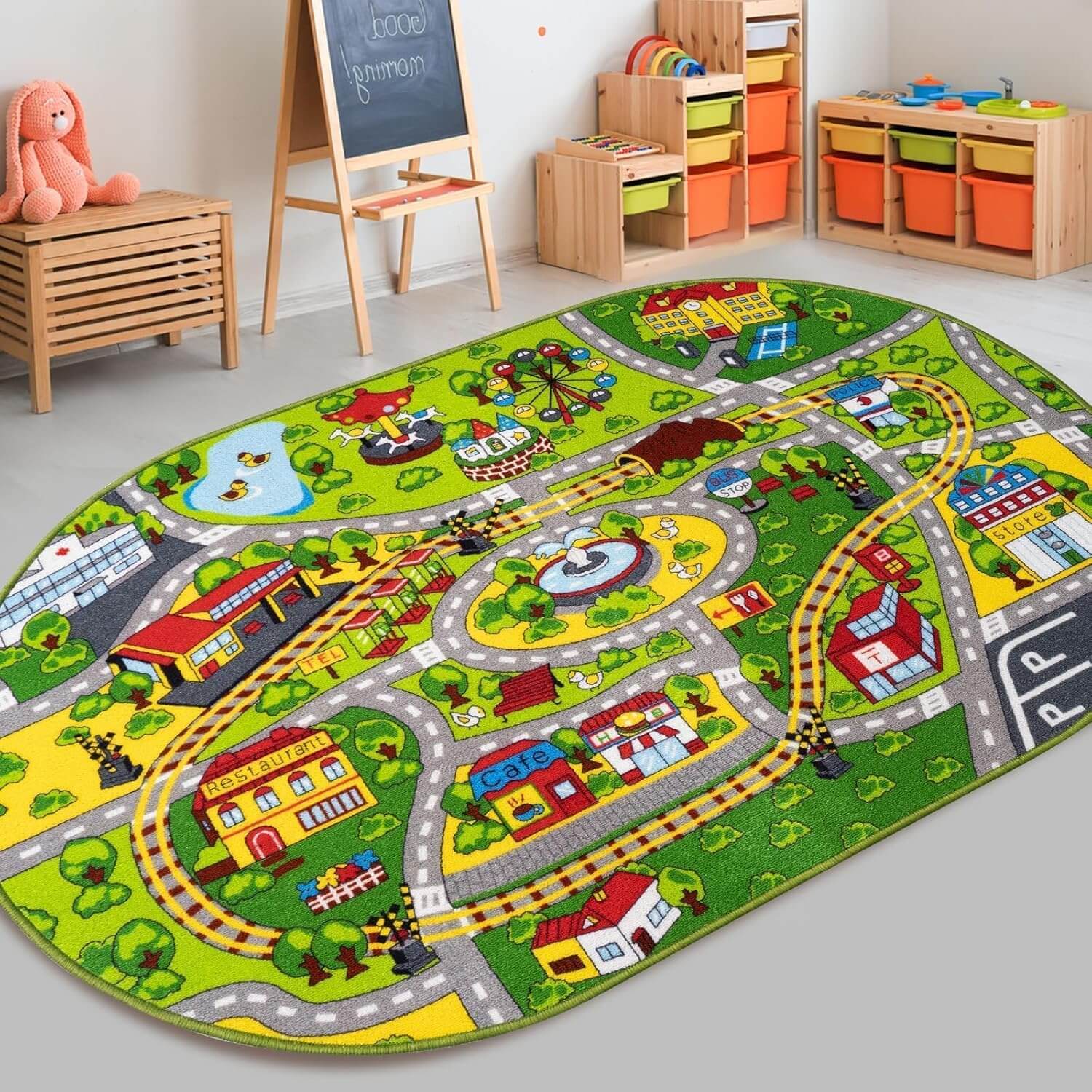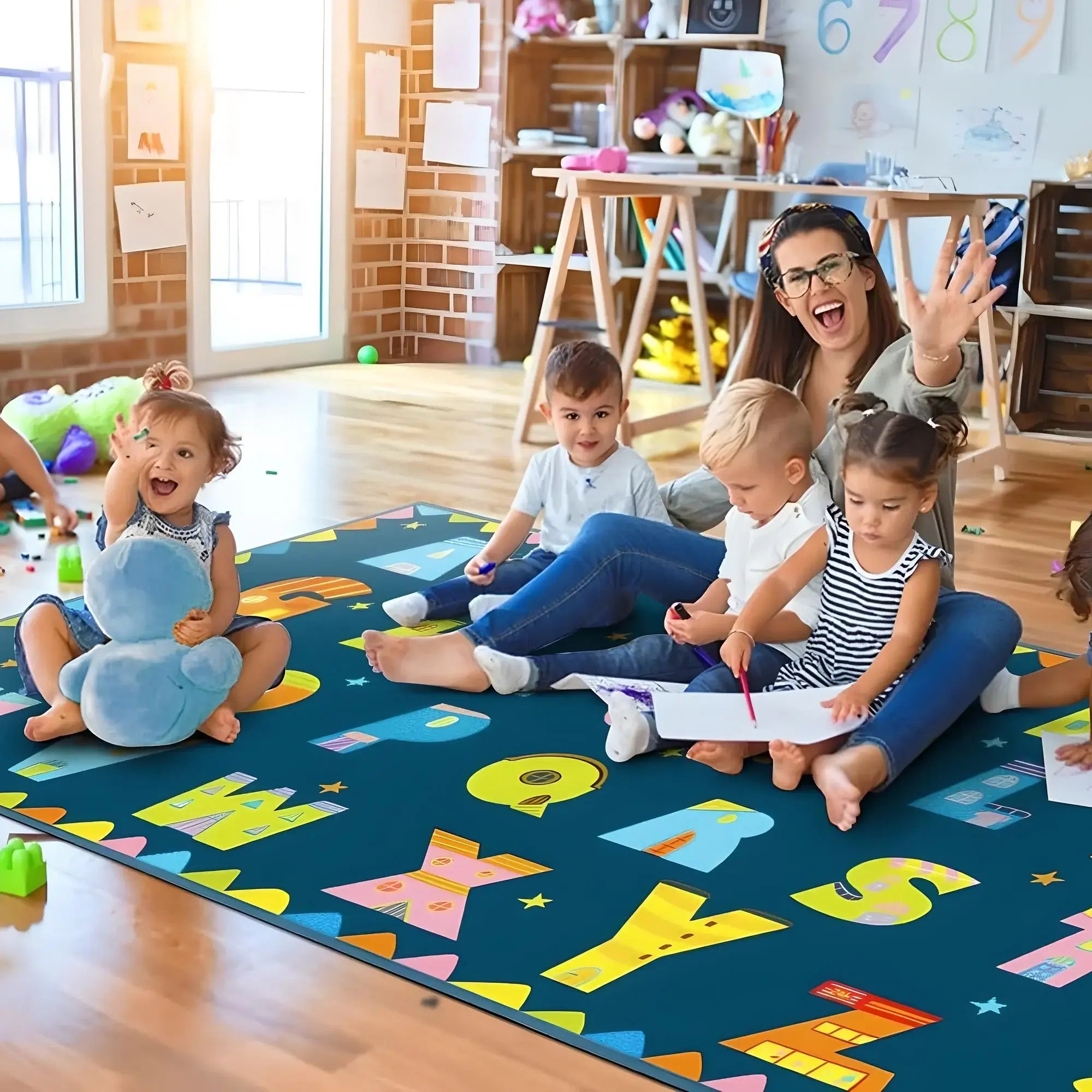The Montessori Philosophy Behind Classroom Rugs
Dr. Maria Montessori believed that children learn best in environments specifically designed to meet their developmental needs.
Classroom rugs in Montessori settings serve multiple educational purposes beyond simple floor covering.
They define individual work spaces, encourage concentration, and help children develop spatial awareness and respect for their learning environment.
Unlike traditional classroom rugs that often feature bright colors and busy patterns, Montessori rugs embrace simplicity and natural aesthetics.
This intentional design choice reduces visual distractions and allows children to focus entirely on their chosen work materials.
Essential Characteristics of Montessori Classroom Rugs
Natural Materials and Neutral Tones
Authentic Montessori environments prioritize natural materials whenever possible. Wool, cotton, and jute rugs align with this philosophy while providing durability for daily classroom use.
Neutral colors like beige, cream, soft gray, or natural fiber tones create a calming atmosphere that supports concentration and focus.
The absence of cartoon characters, bright logos, or educational graphics is intentional.
Montessori educators understand that children's natural curiosity and intrinsic motivation drive learning more effectively than external stimulation from decorative elements.
Child-Proportioned Sizes
Small-sized classroom rugs are typically preferred in Montessori settings, designed to accommodate individual or small group work.
Standard sizes range from 3x4 feet for individual work spaces to 4x6 feet for collaborative activities. This sizing encourages children to define their personal work boundaries and respect others' learning spaces.
Practical Design Features
Quality Montessori rugs feature low pile heights that won't interfere with manipulative materials like geometric solids, pink tower blocks, or golden beads.
The rug surface should be stable enough for precise movements required in practical life activities and sensorial work.
How Montessori Rugs Support Child Development
Independence and Self-Direction
In Montessori classrooms, children choose their own work and carry it to a rug where they can focus without interruption.
This process develops decision-making skills, physical coordination, and personal responsibility.
The rug becomes their defined workspace where they have autonomy over their learning experience.
Concentration and Focus
The physical boundary created by a rug helps children develop concentration—one of the core goals of Montessori education.
When a child spreads their work on a rug, they create a focused environment that naturally discourages wandering attention and promotes deep engagement with learning materials.
Grace and Courtesy
Montessori rugs teach important social skills through practical application.
Children learn to walk carefully around occupied rugs, ask permission before joining someone's work space, and treat shared classroom materials with respect.
These lessons in grace and courtesy extend far beyond the classroom setting.
Contemporary Adaptations of Traditional Montessori Rug Use
Flexible Learning Environments
Modern Montessori classrooms often incorporate multiple rug sizes and styles to accommodate diverse learning preferences and activities.
Some educators use washable rugs for messy practical life work, while maintaining traditional natural fiber rugs for dry materials and quiet work.
Integration with Technology
Contemporary Montessori environments may include designated rug spaces for appropriate technology use, maintaining the philosophy of purposeful, child-directed learning while acknowledging modern educational tools.
Outdoor Classroom Extensions
Progressive Montessori programs extend the prepared environment outdoors using weather-resistant natural fiber rugs for nature study, outdoor practical life work, and seasonal learning activities.
Selecting Appropriate Rugs for Montessori Environments
Quality Over Quantity
Montessori philosophy emphasizes investing in fewer, higher-quality materials rather than accumulating numerous options.
Choose durable, natural rugs that will withstand years of daily use while maintaining their aesthetic appeal and functional properties.
Safety and Health Considerations
Select rugs with natural latex backing or no backing at all to minimize chemical exposure.
Ensure all rugs meet safety standards for slip resistance and flame retardancy while maintaining the natural material preference central to Montessori philosophy.
Maintenance and Care
Natural fiber rugs require more careful maintenance than synthetic alternatives, but this care becomes part of the classroom's practical life curriculum.
Children can participate in rug cleaning, rotation, and basic maintenance, developing life skills while caring for their shared environment.
Creating Learning Zones with Montessori Rugs
Practical Life Area
Designated rugs in the practical life section should accommodate activities like food preparation, plant care, and cleaning exercises.
Choose rugs that can handle occasional spills while maintaining the aesthetic standards of the prepared environment.
Sensorial Work Spaces
Sensorial materials require stable, quiet spaces where children can explore dimensions, textures, and relationships between objects.
Rugs in this area should provide cushioning for materials like the color tablets while remaining level for precise work with geometric solids.
Language and Mathematics Zones
These curriculum areas often require floor space for large materials like grammar symbols or mathematical manipulatives.
Appropriately sized rugs define these work spaces while providing comfort for extended concentration periods.
The Role of Beauty in Montessori Rug Selection
Dr. Montessori believed that beautiful environments inspire children to care for and respect their surroundings.
Classroom rugs should contribute to the overall aesthetic harmony of the space while serving their functional purposes.
This beauty isn't decorative but rather emerges from quality materials, thoughtful design, and purposeful placement.
Supporting Mixed-Age Learning
Montessori's three-year age groupings benefit from flexible round area rugs that accommodate different developmental stages simultaneously.
Younger children may need more defined boundaries, while older students can work with larger materials requiring expanded floor space.
Montessori classroom rugs represent far more than simple floor coverings—they're carefully chosen tools that support child development, independence, and learning.
By understanding their educational purpose and selecting appropriate options, educators can create prepared environments that truly serve the child's natural development and intrinsic love of learning.
-
Maria Montessori Biography and Philosophy - Wikipedia




Leave a comment
This site is protected by hCaptcha and the hCaptcha Privacy Policy and Terms of Service apply.